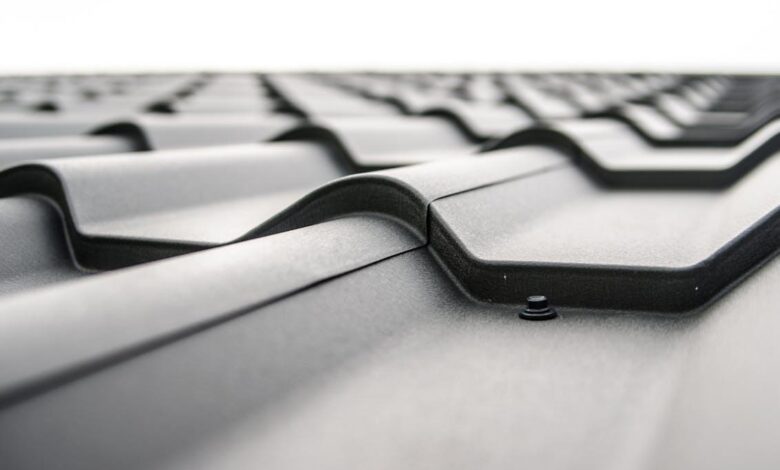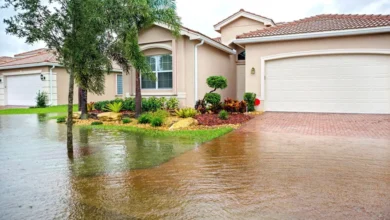Tips that Make Your Roof Last

In Michigan, where the climate can range from harsh winters to hot, humid summers, maintaining a roof in good condition is crucial to protect your home from the elements. A well-maintained roof not only safeguards your home against water damage and heat loss but also enhances its overall value and curb appeal. Understanding how to care for your roof can prevent costly repairs and extend its lifespan significantly. This article provides practical tips on how to maintain your roof to ensure it remains robust and functional through all seasons.
1. Regular Inspections
Regular inspections are vital to maintaining the integrity of your roof. It is advisable to have a professional inspect your roof at least twice a year and after any major storm or severe weather event. These inspections can help identify potential issues like cracked, loose, or missing shingles that might not be visible from the ground. Early detection of such problems allows for timely repairs that can prevent more extensive damage down the line.
2. Choose Durable Materials
The longevity of your roof largely depends on the quality of the materials used. When considering a new installation or a replacement, selecting durable materials is crucial. In regions with variable weather like Michigan, a Michigan metal roof replacement is a popular option because it withstands severe weather conditions and can last decades with minimal maintenance. Metal roofs are resistant to wind, corrosion, and fire, making them an excellent long-term investment for your home.
3. Prompt Repairs
Never delay repairs if you notice any damage to your roof. Small issues such as a few missing shingles or a minor leak can quickly escalate into more significant problems if not addressed promptly. Water infiltration can lead to mold, rot, and structural damage that are far more costly to repair. Keep an eye on the condition of your roof and act immediately if you spot any signs of damage, no matter how minor they may seem.
4. Proper Installation
A roof’s effectiveness and lifespan are significantly influenced by how well it is installed. It is crucial to hire experienced and reputable professionals for any roofing project. A properly installed roof ensures that all materials are correctly aligned, secured, and sealed, which helps prevent issues related to water leakage and structural damage. Do thorough research and check reviews before hiring a contractor, and ensure they are licensed and insured.
5. Clean Gutters Regularly
Gutters play a key role in roof maintenance by directing rainwater away from your home’s foundation and protecting the structural integrity of your roof. Clogged gutters can lead to water back up that damages not only your roof but also your walls and foundation. Make it a habit to clean your gutters at least twice a year and after major storms. This helps prevent water from pooling and causing damage to the roof and other parts of your home.
6. Prevent Ice Dams
Ice dams can form on roofs during the cold winter months when heated air in the attic causes snow on the roof to melt and refreeze at the edges. This ice build-up can prevent proper drainage and lead to water seeping under the shingles and into your home. Installing heated cables along the edges of your roof can also help prevent ice dam formation by maintaining a consistent temperature.
7. Trim Overhanging Branches
Trees around your home can pose a risk to your roof, especially during storms. Overhanging branches can scrape against roofing materials, damaging shingles and potentially leading to leaks. Additionally, leaves and twigs can accumulate on the roof and in gutters, retaining moisture and contributing to decay. To protect your roof, regularly trim any branches that hang over your house. This not only reduces physical damage but also decreases the amount of debris that falls on your roof.
8. Ensure Adequate Ventilation
Proper ventilation in your roof and attic is crucial for prolonging the life of your roof. Poor ventilation can lead to heat and moisture accumulation that can cause the roof materials to deteriorate prematurely. It can also contribute to problems like ice dams and mold growth. Make sure your attic has sufficient intake and exhaust vents to allow for the natural flow of air, which helps keep the roof temperature consistent and prevents moisture build-up.
9. Remove Debris
Regularly removing debris from your roof is another important maintenance task. Leaves, twigs, and other debris can accumulate over time, especially after storms or during the fall season. This accumulation can trap moisture against the roof, leading to rot and the degradation of roofing materials. At least twice a year, use a roof rake or similar tool to gently clear your roof of debris, taking care not to damage the shingles.
10. Check for Algae and Moss
The presence of algae and moss on your roof can be more than just an aesthetic issue; these organisms can damage roofing materials over time. Moss, in particular, can retain moisture and cause wood rot and shingle damage. To combat these growths, ensure that your roof is clean and that areas do not stay damp. You can use specialized cleaning solutions designed for roofs to remove algae and moss or consider installing zinc or copper strips at the ridge of your roof, which help prevent their growth.
Conclusion
Maintaining a roof requires attention to various factors, from the physical structure to environmental interactions. By following these key tips—managing ice dams, trimming overhanging branches, ensuring proper ventilation, keeping the roof free of debris, and controlling the growth of moss and algae—you can extend the life of your roof and enhance your home’s safety and curb appeal. Regular maintenance not only helps avoid costly repairs but also ensures that your roof remains an effective shield against the elements, protecting your home for years to come.



